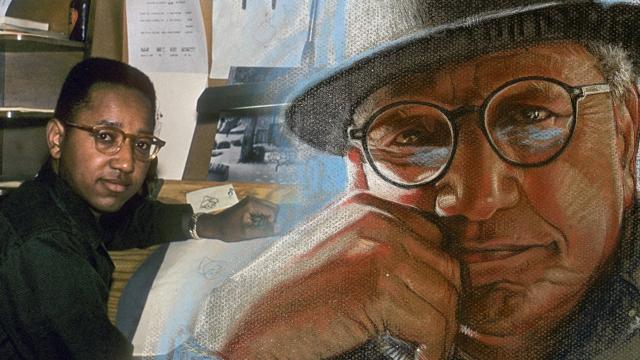He’s lent his talents to some of the most popular animation work of the last 60 years, ranging from Sleeping Beauty, Superfriends, The Smurfs, The Jungle Book, Mulan and Toy Story 2 to Robot Chicken and Jonny Quest. He helped make the iconic opening animation from Soul Train. Yet, Floyd Norman: An Animated Life shows that he wasn’t just the first black man to work at Disney. He was also a vital connection to all the ups and downs in several creative mediums for more than half a century.
Early on in the film that bears his name, the 81-year-old Norman says, “I never saw myself as anything special, and people have often asked me ‘how did it feel about being the first African-American at Disney?’ I wasn’t even aware that I was an African-American. [laughs] I was another artist looking for a job.” This is said guilelessly by Norman, who comes across as a spry, lovable grandpa for most of the movie.
An Animated Life explains how growing up middle class in Santa Barbara — away from the harsher Jim Crow deprivations in the South — let Norman live a life that most black folks couldn’t in the 1930s. Seeing Dumbo in a movie theatre as a child inspired him to pursue animation as a life goal. He took art classes at a museum as a kid and had a science teacher who played golf with Katy Keene artist Bill Woggon, which led to his first professional work as an assistant.
He made it to Disney in 1956 after going to art school in Los Angeles. The first half of An Animated Life is largely a feel-good story about one man’s inadvertent barrier-busting at the House of Mouse. Mild mention is made of the fact that some people didn’t want to work with Norman and tried to hold him back in his career. Yet, it’s his forced retirement from Disney at the age of 65 forms the crux of the documentary’s narrative spine, shining a spotlight on how ageism sidelines creative people still capable of doing noteworthy work.
Biographical elements aside, Floyd Norman: An Animated Life also excels as a look into the personal histories and processes that went into some of the most beautiful animated films ever made. Insights into production responsibilities, anecdotes about pitching story ideas to the demanding Walt Disney himself and a survey of just how much has changed in terms of craft. Batman: The Animated Series‘ Paul Dini, How to Train Your Dragon writer/director Dean DeBlois and Groo comic creator Sergio Aragones all show up to offer testimonials of Norman’s dedication and genius. In particular, the segment detailing his hiring at Pixar and contributions on Toy Story 2, the film frames Norman as a living link to classic animation knowledge and history that his younger colleagues could draw on.
Norman’s relationship with Disney formed the bedrock of his life. He was drafted into the military in 1958 and was stationed in South Korea as he started to work on 101 Dalmatians; he returned in 1960 and was brought in to rewrite The Jungle Book. That shift took him away from the nuts-and-bolts drawing work of animation, which Norman missed but adapted. After Walt Disney died, he went on to form Vignette Films, a production studio which made films about black history and culture. During Los Angeles’ Watts Riots in 1965, Norman took a film camera and took footage that showed the world black people’s frustration with the assassinations and curdled promises that plagued the Civil Rights movement. Longtime friend and business partner Leo Sullivan said of artists and filmmakers, “We were marching with our pencils” — later recalling how distributors asked Vignette to tone down the amount of information on black achievement to make their films sell better.
Norman also did a long stretch at Hanna-Barbera; his time there is chronicled in a segment where he reunites with colleagues from that time and is hilariously unsparing about the fact that Hanna-Barbera was a mill that cranked out cheap, knockoff cartoon shows. At one point, Norman says, “Lord knows I worked on Scooby-Doo. I don’t know how many Scoobys I did. Hate that dog!” But no matter where his career took him, Norman always came back to Disney, whether it was writing and drawing the Mickey Mouse comic strip for the publishing division or being an integral part of the early days at Pixar.
Throughout the film, Norman invokes a seasoned raconteur’s easy command of attention. But An Animated Life isn’t just a big dose of hagiography; the film does a good job of sketching out the emotional complications of Norman’s life. Friends and family talk about him as a man who doesn’t always access his emotions easily and the story of how his disproportionate focus on work and peer socialising broke up his first marriage is sad. He wrote a letter defending Walt Disney from charges of racism then went on to create cartoons that savaged the company with the founder’s name after he got laid off. There’s a lot of poignancy on the screen when friends and family talk about his eagerness to stay involved in the business he grew up in. After remarrying another woman who worked at Disney, Norman lingered around the company and contributed to various projects; happily, this culminated with his eventual re-hiring.
Near the end of the movie, Norman offers up some regret at not being a top talent himself, despite being lucky enough to have been worked with top talent. But such assessments often evolve over time, and the film makes a compelling, complex case that Norman has nothing to regret in that regard.
Floyd Norman: An Animated Life was directed by Michael Fiore and Erik Sharkey. The documentary saw a limited theatrical release earlier this year and is now available for streaming on Netflix.
